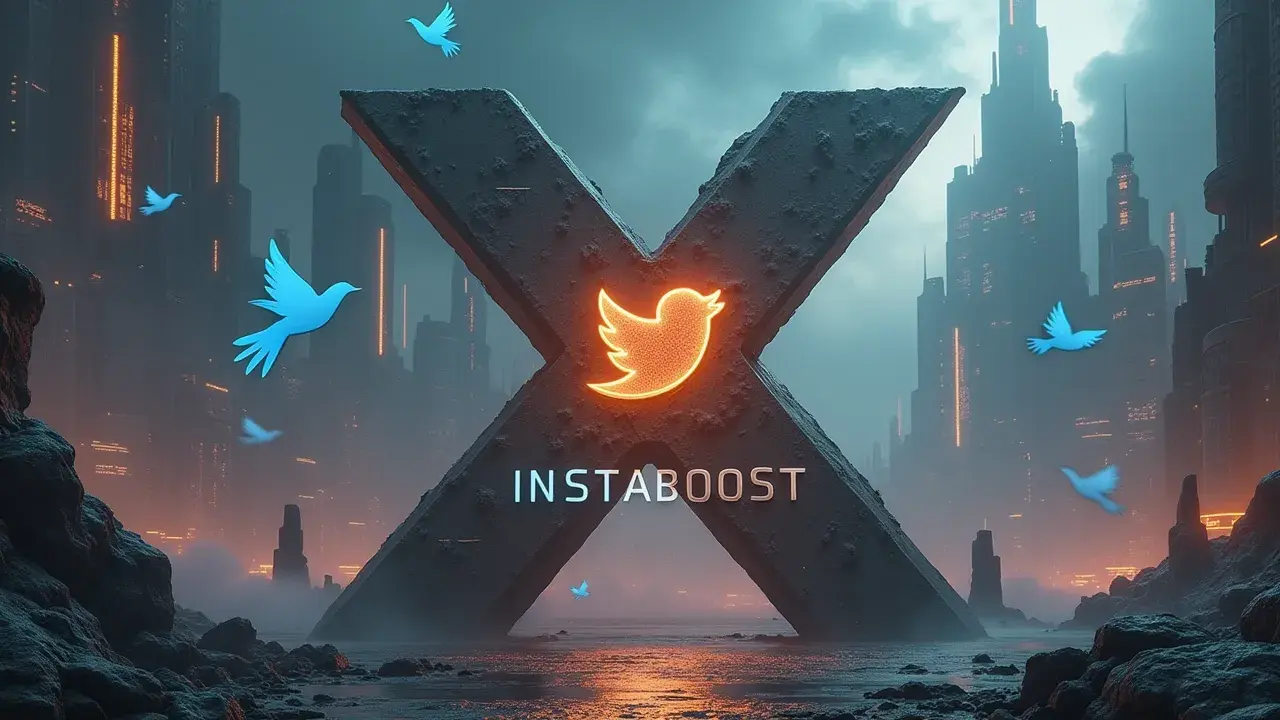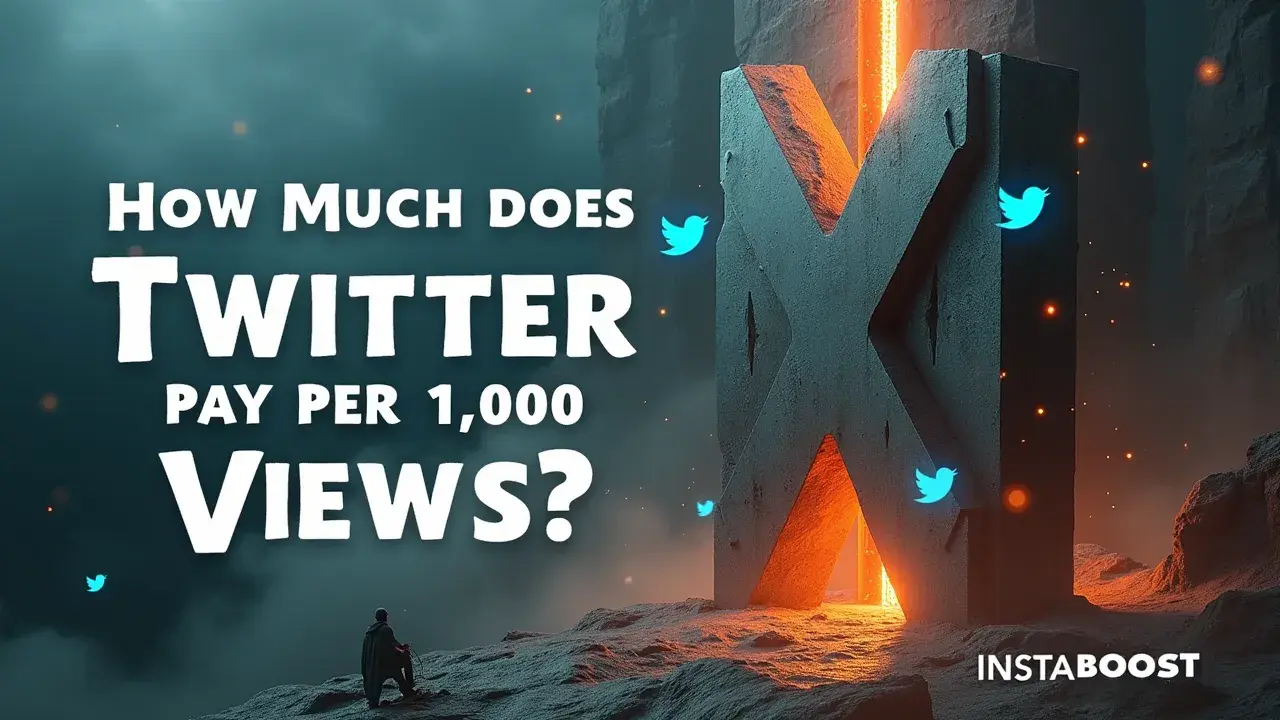How Much Does X (Twitter) Pay per 1,000 Views?
Payouts per 1,000 views depend on view quality, audience location, and watch time. Track what counts as a view and where it originated, because geography and source can shift the effective rate. Early spikes in the first hour can signal momentum, but sustained retention typically drives stronger results. Focusing on engaged audiences and consistent watch time is the smart path to more reliable earnings, whether measuring per 1,000 or scaling toward 1 million views.
Start With What Counts as a “View”
If you want to know how much Twitter pays per 1,000 views, start by defining the metric and auditing where those views come from. On X, not every impression is monetizable, and payout windows depend on geography, ad inventory, and session depth.
A thousand quick scroll-bys from untargeted timelines won’t behave like a thousand views driven by search intent or creator collabs that earn longer watch time and real comments. It works when early momentum pairs with retention signals – people staying, replaying, and replying – because that’s what unlocks stronger ad fill and higher CPMs. Treat “per 1,000 views” as an average you earn, not a fixed rate you’re owed.
A thousand quick scroll-bys from untargeted timelines won’t behave like a thousand views driven by search intent or creator collabs that earn longer watch time and real comments. It works when early momentum pairs with retention signals – people staying, replaying, and replying – because that’s what unlocks stronger ad fill and higher CPMs. Treat “per 1,000 views” as an average you earn, not a fixed rate you’re owed.
Test how formats, posting times, and hooks affect average watch duration, then scale what sustains attention with targeted promotion from reputable partners and creators whose audiences match your topic, and scale your presence on Twitter. Keep clean analytics. Separate organic reach from paid accelerants, tag links, and monitor geography since U.S., UK, and tier‑one markets typically command better revenue. If you qualify for the platform’s monetization programs, tighten your testing loop – ship variations, measure retention at 3s/10s/30s, prune formats that attract low‑intent swipes, and reinvest in posts that pull saves and replies.
The non‑obvious edge is that the first hour is a signal, not a verdict. A modest start that holds viewers can beat a viral spike that collapses by the 5‑second mark, and that gap often decides whether “per 1,000 views” trends toward pocket change or something you can scale. In short, measure view quality before you price it, because that’s what the platform and advertisers are already doing.

Why My Benchmarks Don’t Look Like Yours
I used to optimize everything, then learned where it doesn’t move the needle. If you’re asking how much Twitter pays per 1,000 views, the only credible answer starts with proving your views are eligible to earn and aligned with advertiser demand. Two creators can show identical impressions and still get very different payouts because the mix behind those numbers varies.
U.S., UK, and tier-1 traffic typically clears higher CPMs. Longer watch time and active comments signal safe, valuable inventory. Session depth – how long users stay on-platform after your post – feeds the ranking system that places ads near your content. That’s why a viral spike from untargeted timelines can underperform, while a smaller audience built through creator collabs, replies, and search intent often wins. For credibility, show your receipts. Segment monetizable impressions versus total impressions, pin down the post types that actually trigger revenue share, and track retention at 3s, 15s, and 75% for video.
If you use paid promotion, treat it like an accelerant, not a crutch – pair targeted boosts from reputable providers like twitter followers boost with clean analytics and a testing loop so you can isolate lift without polluting eligibility. The non-obvious insight is that early momentum works when it attracts the right second-order audience – people who interact, return, and expand the ad surface around your content. That’s what stabilizes RPM on X and narrows the gap between “1,000 views” and real earnings. Do that and your benchmarks stop being vague averages from strangers and start mapping to your geography, niche, and watch-time profile, which are what actually set how much Twitter pays per 1,000 views.
Design for Monetizable Attention, Not Just Reach
Most strategies slip when they forget the human. If you want to lift payout per 1,000 views on X, design for the person who’ll actually sit with your post, not just flick past. Pair a hook that promises a clear payoff with a format that rewards time on task – short video with captions for session depth, clean threads with front-loaded value, and images that lead to a crisp CTA.
Then steer traffic that matches advertiser demand by leaning into geographies with higher CPMs, topics with buyer intent, and audiences with purchase signals. Use targeted promotion from reputable accounts and creator collabs that earn real comments, not empty likes, and reserve any artificial boosts for vetted sources such as a likes service for X when you can verify quality and fit. Early momentum matters when it turns into retention signals like watch time, replies, and profile clicks. Build a tight testing loop. Ship two variants, check eligible impressions versus total impressions, and map comments to segments like prospect, peer, and passerby.
When paid boosts fit, keep them to high-fit slices and measure lift on monetizable impressions, not vanity reach. Keep analytics clean. Tag links, track thread drop-off, and isolate sessions coming from search terms like “Twitter monetization payout” so you can tie higher RPMs to specific entry points. The non-obvious lever is pacing. Post when your core cohort is likely to linger, then extend life with a follow-up reply that answers the top objection. That often spikes watch time and lines up with ad inventory. This is how “how much does Twitter pay per 1,000 views” shifts from a guess to a design choice. Engineer the audience mix and interaction quality, and the payout follows.
Stop Treating RPM Like a Flat Rate
Remember when organic reach didn’t feel like a bedtime story? If you’re hunting for a single answer to how much Twitter pays per 1,000 views, you’re chasing the wrong thing. RPM moves. It climbs when your views are eligible, contextually aligned, and backed by retention signals advertisers actually buy. A 100k‑impression meme thread with fly‑by swipes is not the same inventory as a 40k‑view clip where 60% watch past the midpoint and comments read like buyer research. That’s why two creators can post similar impressions and land on different payouts per 1,000 views.
The smarter move is to treat “how much does Twitter pay per 1,000 views” as a diagnostic. Verify your share of monetizable views, segment by geo, and map topics to active budgets. Pair formats with intent – short video plus captions for session depth, clean threads with a front‑loaded payoff, images that point to a crisp CTA – and test targeted promotion from reputable sources to build early momentum with the right audience instead of inflating low‑quality reach. Collab posts with creators who already attract purchase‑minded followers can lift your fill rate, while cheap Twitter views and real comments and saves compound eligibility in the algorithm.
Keep analytics clean. Track retention quartiles, country mix, and topic tags side by side so you can see when a lift in watch time actually precedes an RPM bump. If you care about how much Twitter pays for 1 million views, start by raising the percentage of views that buyers want. You’re not chasing more eyeballs – you’re engineering inventory that advertisers see as safe, contextual, and worth paying for.
Turn Views Into Value: Your Ongoing Playbook
You’ve outgrown the old version, so let it burn. Treat your X payout like a living system – you earn more per 1,000 views when you consistently earn attention advertisers can monetize. Keep a “design for monetizable attention” mindset, then run a simple loop: plan, publish, promote, parse, pivot. Plan formats that compound session depth – captioned short video, crisp threads, image-led CTAs – and map them to geographies and topics with higher CPMs. Publish with a hook that promises a payoff in the first second and front-load value so early retention signals spike.
Promote with intent. Small, targeted boosts from reputable ad accounts or creator collabs can seed early momentum when they attract the same buyers you want long term; low-quality traffic can dilute RPM, and some teams even test order tweet retweets alongside creator whitelisting to calibrate early velocity. Parse with clean analytics. Segment by country, topic, entry source, and watch time. Tag experiments so you can tie comments that show real consideration to specific posts. Pivot fast.
Cut formats that spike reach but sag in completion. Double down on assets that drive replies and saves. Calendar collabs around product launches or seasonal advertiser demand. If you want to know how much Twitter pays per 1,000 views, this is how you tilt the number your way – by matching audience intent to inventory and proving it with retention. One non-obvious edge is to run intent bridges where a high-CPM thread hands off to a short video on the same topic within 24 hours. The second post often rides warmed demand and costs less to promote. Keep safeguards. Align brand safety with the advertiser categories you court, and test with small budgets before you scale. That’s how you stack RPM, not chase it.















